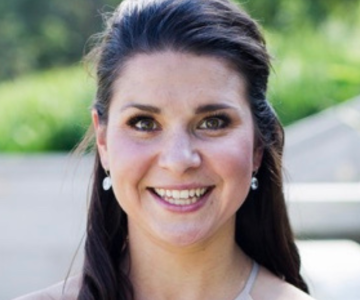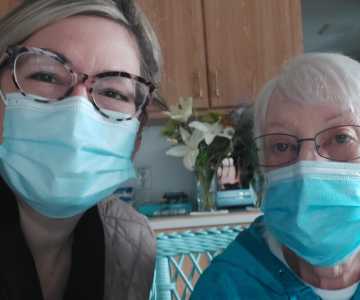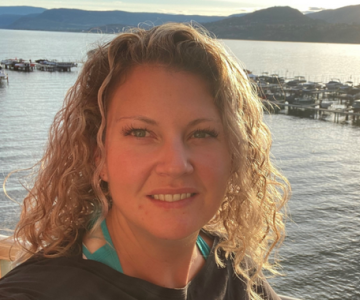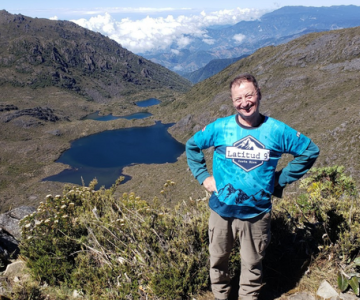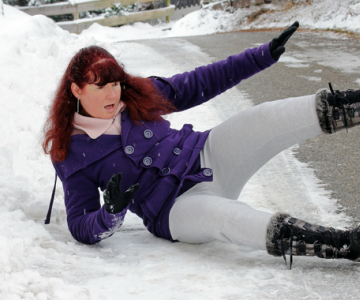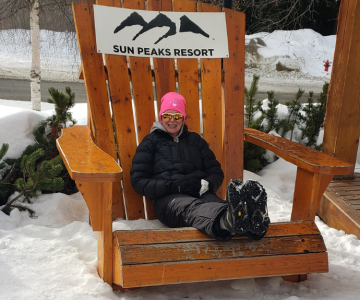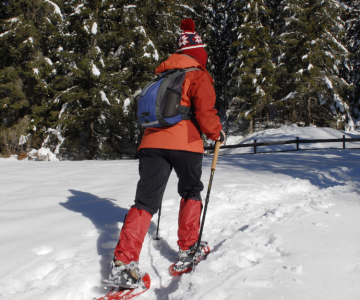Breadcrumb
Explore Stories
Community & Culture
Name: Tasha Kanigan (she/her/hers)Job Title: Regional lead for primary careYears of Service: 10Worksite: Castlegar Health CentreCommunity: CastlegarAncestral Territory: Converging territory of the Sinixt, Syilx, Ktunaxa, Secwepemc peoples in the Kootenay BoundaryAdvice to live by: No matter the challenges that life presents, always look for the positive learning opportunities that come about and make every day a reason to smile.
When Tasha Kanigan went into nursing, she didn't imagine the “endless opportunities” that her career would bring. Nearly 11 years into her career, Tasha is now the regional lead for primary care with Interior Health (IH).
“I feel so fortunate that I have been able to work with and support clients from across the lifespan, and work with many professionals and teams that are all striving to do the best that they can to provide optimal care to their clients,” she said. “I am continually inspired by the stories that I hear about the work we do.”
Health & Wellness
Story by Jacqueline Turvey, primary care respiratory therapist
Quitting smoking can add years to your life. It improves your breathing, heart rate, blood pressure, taste and smell, and has financial benefits as well.
However, as a clinician, I often remind myself that it is not my responsibility to make people quit or reduce their tobacco and nicotine use. It is my job to support individuals at all stages to achieve their goals, and for those who may not be ready for change, to let them know that I am there for them if and when they change their mind.
Community & Culture
Name: Lauren Phillips (she/her/hers)Job Title: Interim clinical operations managerYears of Service: 10Worksite: Hillside CentreCommunity: KamloopsAncestral Territory: SecwépemcAdvice to live by: Just breathe
Lauren Phillips describes herself as motivated – this is why the regional tertiary coordinator recently took an interim position as the clinical operations manager at Hillside Centre, which provides psychiatric services. Her current day-to-day work includes supporting staff, psychiatrists, professionals and patients within Hillside.
“Being new to this role it’s a steep learning curve, but I have amazing support from my director, fellow MHSU managers and the staff.”
Community & Culture
Name: Franz Huber (he/him/his)Job Title: Registered Nurse (RN)Years of Service: 25Worksite: Rutland Community Dialysis ClinicCommunity: KelownaAncestral Territory: Syilx OkanaganAdvice to live by: Work hard and be disciplined, but also have fun, and spread love and kindness
Franz Huber has been a registered nurse with Interior Health (IH) for over 25 years. He moved to Canada from Austria in 1986, settling in Kelowna in 1990.
Franz describes himself as a hardworking, caring, practical and "well-rounded" experienced nurse. While he is very much a self-sufficient survivalist and an environmentalist, Franz also considers himself a farmer/cowboy with a good sense of humour.
Health & Wellness
During the colder months it’s important to stay active and get fresh air. It’s also important to use caution in snowy or icy conditions to prevent injury from slipping or falling. You also need to be careful when shovelling your driveway.
Community & Culture
Name: Shannon Carver (she/her/hers)Job Title: Director, Medical Imaging OkanaganYears of Service: 25Worksite: Penticton Regional HospitalCommunity: PentictonAncestral Territory: Syilx OkanaganFavourite Quote / Advice to live by: Always try to look at the bright side of life – as staying positive is infectious.
Shannon hails from a small town in Saskatchewan called Kamsack. She finds inspiration from being around energetic people and loves to travel. She also participates in a variety of indoor and outdoor sports, especially those that involve water, which is what attracted her to life in the beautiful Okanagan. Shannon and her family enjoy camping, golfing, biking, boating and wake surfing. Shannon also enjoys recreating on ice, playing competitive ladies and mixed curling.
Shannon has worked with IH for 25 years and is currently the director of medical imaging for the North and South Okanagan. She was hired as a casual medical radiation technologist and worked her way up to director.
Shannon’s key to success is she values a work-life balance, and spends her free time exploring parts of the world near and far with friends and family.
Community & Culture
Name: Marilyn J. Ransome (she/her/hers)Job Title: RN - Community Integration Care CoordinatorYears of Service: 10Worksite: Lansdowne Park MallCommunity: KamloopsAncestral Territory: SecwépemcFavourite Quote / Advice to live by: “Be the reason someone smiles.” – Roy T. Bennett
Marilyn Ransome is inspired by teamwork. As a community integration care coordinator (CICC)/team leader in Kamloops, the Victoria, B.C. native is responsible for the coordination of day-to-day operations and quality client care, and supports the seamless movement of clients through the health-care system and in accessing appropriate resources.
“The home health team I work with is inspiring.” When the chips are down and our backs are against the wall, this team rallies together to help each other with tenacity, perseverance and humour.”
Community & Culture
(PHOTO CREDIT – Kalen Jones) Clearwater leaders got together last summer to celebrate the resilience of their physicians. Front row (L-R): Past Mayor John Harwood, Coun. Shelley Sim; Dr. Sandra Okezue; MP Frank Caputo; Yellowhead Community Services Vice Chair Shirley Frost; Coun. Barry Banford; Coun Lucy Taylor; Medical student Anmol Mattu; and Dr. Kayode Bamigboje; Back row (L-R): CAO John Thomas; Obi Okezue; regional district director Carol Schaffer; Mayor Merlin Blackwell and Coun. Bill Haring.
Between April and September 2022, Clearwater hospital was forced to close its emergency department almost 60 times due to emergency department RN staffing vacancies.
But instead of finger pointing, people from multiple agencies talked together about how they could make a difference. And then they went to work.
Interior Health, the District of Clearwater, individual health administrators, Clearwater mayor and council, community residents, hospital nursing and non-nursing staff, physicians, the Rural and Remote Division of Family Practice and the B.C. Nurses Union worked to find solutions to a complex problem.
The end result – no closures since early September.
Mayor Merlin Blackwell is proud of the united effort that went in to supporting Dr. Helmcken Memorial Hospital and its emergency department.
“All of us are acting as recruiters and promoters of the community,” he said.
The mayor spoke about the Clearwater situation to his peers at the Union of B.C. Municipalities, saying he believes the key was getting to know the people in the health-care system so conversations in a spirit of trust could take place.
Health & Wellness
The holiday season includes many cherished moments like festive light displays, classic carols on the radio, and visits with friends and family. But the holidays can also be mentally draining depending on your circumstance.
Read on to learn 10 ways you can take care of yourself and your mental health this holiday season.
While the following tips can help, if you're experiencing prolonged mental health challenges, such as sleep or appetite issues, low mood, or problematic substance use, contact your primary care provider or local counsellor in your community, or call 310-MHSU to reach your local Mental Health and Substance Use centre within Interior Health.
If you are experiencing feelings of hopelessness and thoughts of self-harm, call the 24/7 Interior Crisis Line at 1-888-353-CARE (2273). This confidential and free service is available day and night, even on the holidays.
-
Load More
Showing 387 of 796
Sign up for email updates
Receive news, alerts, public service announcements and articles right to your inbox.


